Mice and rats
Home /
Mice and rats
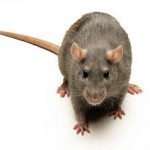
Brown rat (Rattus norvegicus)
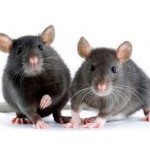
Black rat (Rattus rattus)
The black rat is the most widespread close relative of the brown rat in Estonia. It is not very easy to distinguish between them. The black rat is usually darker and has longer ears and tail than the brown rat. The black rat used to be common, but recently it has become increasingly rare and has completely disappeared from most places. The black rat originated in India, but in modern times it has spread almost everywhere. The black rat is a good climber and therefore likes to live in attics, barns and other such places. However, it avoids the basement as its habitat. It eats everything it can get to but prefers vegetarian food. Black rats breed 2–6 times a year, usually from March to October. However, under good conditions, they can reproduce all year round. Gestation lasts for about three weeks, after which 7–12 pups are born. Newborn pups are naked and blind. They start to see after two weeks and suck milk for three weeks. Young rats become sexually mature at the age of two months. The black rat usually lives for three years. Rats are harmful to humans because they chew a lot to wear down their ever-growing teeth. They also contaminate food and spread diseases.
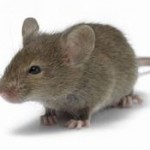
House mouse (Mus musculus)
The house mouse is an animal that everyone is sure to have encountered. It often invades our homes as an unexpected and unpleasant guest. The house mouse is closely tied to human habitation and is called a human companion; outside buildings the house mouse can only survive in the summer. Thanks to humans, the house mouse has spread all over the world. The house mouse is all grey in colour, sometimes with a yellowish or brownish tint. Its belly is light or yellowish grey. It is easily recognisable for its so-called “mouse odour” secreted by the mucous glands. As said, the house mouse lives mainly in dwellings – pantries, barns, basements and other storage places. Only in summer can it be found near settlements – in gardens, fields and underwood, where it digs short and simple burrows. In nature, the house mouse feeds on seeds of various plants, especially cereals, other plant parts and insects. In houses, it feeds on everything available, tending especially often to take advantage of people’s food supplies, and often the house mouse also feeds on all kinds of waste. The house mouse is characterised by extremely high fertility – under favourable conditions, a mother mouse can give birth to up to 8 litters of pups a year. In the wild, it breeds only in the summer months, from April to October, and the number of litters is 2–3. Each time it gives birth to 3 to 8 cubs, but there are also reports of litters of 21 offspring. Pups are naked at birth and weigh less than 1 g. The lifespan of mice is short – often it is only three months, in any case not more than two years.

Yellow-necked mouse (Apodemus flavicollis)
The yellow-necked mouse has relatively large dimensions for a mouse – the length of its body is up to 11–13 cm. It has a long and pointed nose, a long tail and strong and long hind legs. The ears are bare and extend far beyond the fur. The coat of the yellow-necked mouse is characterised by yellow and light brown hues – the back is yellowish to reddish brown and the underbelly is snow-white. A clearly visible orange collar is below the throat. The yellow-necked mouse is common throughout Europe, and its preferred habitats are broad-leaved deciduous forests, underwood and shrubs as well as parks, gardens and fields. However, its avoids dense forests. The yellow-necked mouse lives in deep burrows between tree roots that have multiple exits. In winter, it is not uncommon for yellow-necked mice to invade stables and barns and even human dwellings. The yellow-necked mouse mostly feeds on seeds – nuts, acorns and chestnuts, but is also capable of killing frogs, lizards, mice and baby birds. Like all mice, the yellow-necked mouse gives birth to 2–3 litters of pups per year. The first litter is born in April, and the breeding season ends in September. There are usually 4–9 pups per litter. It becomes sexually mature at the age of 2 months, and pups born in the spring reproduce in the same summer. The life span of the yellow-necked mouse is not long, in good conditions it lives to 4 years at the most.
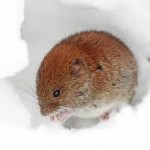
Bank vole (Clethrionomys glareolus)
The bank vole is characterised by the unusual colour of its coat – it is reddish, even rusty on the back; the tail is short – about half the length of the body and two-toned, dark brown on top and whitish grey on the bottom. The habitats of the bank vole are closely tied to the forest, it often inhabits large and thick forests and even riparian forests. To a lesser extent, it can also be found in parks, meadows and shrubs along water bodies. The bank vole lives in burrows under the roots of trees and shrubs and under piles of debris, which are complex and equipped with many passages. For movement, it often uses passages dug by moles. In winter, the bank vole often digs passages in the snow. It is also a skilled climber, often climbing trees and shrubs. On the ground, the bank vole moves forward with jumps. It can be active both day and night but has been observed to be more active in the dark. The bank vole feeds more on the green parts of plants, including seeds, roots and even mushrooms, than other mice encountered here. In terms of animal food, it prefers only insects. In winter, while moving under the snow, the bank vole also feeds on lichens. For the winter, the bank vole gathers reserves, but they are mostly small. The bank vole breeds in the summer, from April to October, and during this time the female gives birth to an average of 2 (sometimes 3–4) litters, consisting of 1–10 (usually 5–6) pups. The pups are born naked and blind. The life span of a bank vole in the wild is 1.5–2 years, 3 years in particularly good conditions.
As a mainly herbivorous animal, the bank vole causes damage to foresters by eating the seeds sown by trees and by damaging the bark of saplings.
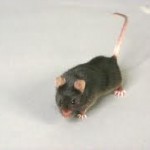
Short-tailed field vole (Microtus agrestis)
The short-tailed field vole is a larger mouse with a body length of 9–13 cm. It has a uniform grey coat that can have a slight brownish tint. The tail is short – it makes up only a quarter of the total length of the body. The short-tailed field vole is common everywhere in Estonia and it inhabits all kinds of forests as well as open landscapes, although it prefers wetter and grassier areas. The short-tailed field vole can also live in the edges of bogs, marshy meadows and coastal meadows, and in the shoreline shrubs of inland water bodies. It digs shallow burrows, but also likes to use natural shelters as nesting sites or builds nests of grass and moss on the ground. In coastal meadows, it can build its home simply under stones. The short-tailed field vole mainly feeds on the green parts of plants and the seeds of herbaceous plants, trees and shrubs. Like all mice, the short-tailed field vole is characterised by a large brood and a long reproductive period, which lasts from March to November. During this time, the female mouse gives birth 3 to 5 times, giving birth to 3–8 pups at a time. Pups are born hairless and blind. The life span of the short-tailed field vole is short – in the wild on average 1.5 years, in very good conditions 3 years.
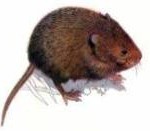
European water vole (Arvicola terrestris)
The European water vole is the size of a rat. The colour of the coat varies from greyish brown to black (juveniles are always grey). The tail makes up about half of the length of the body. Ear lobes are short and barely protrude from the fur. The water vole can be found everywhere in Estonia. It is especially common on the islands and on the coast of Western Estonia. In general, however, it is widespread throughout Eurasia. It lives mainly near water bodies and is a good swimmer and diver. It makes his nest in sedges, hollow stumps or builds it from the stems and leaves of plants. At the end of the summer, it moves to higher areas where its builds elaborate winter burrows. The main food for the water vole is the juicy parts of reeds, horsetail and yellow waterlily, but it also likes to feed on potatoes, carrots and beets. In winter, it does not say no to the bark and shoots of deciduous trees. It gathers food for itself for the winter. During the long breeding season, which lasts from March to October, the female gives birth to 2–3 litters, each with 2–10 pups. Juvenile water voles become independent at three weeks of age. It reaches sexual maturity at the age of two months. They have a maximum life span of four years.
